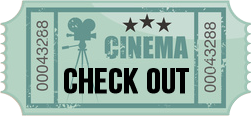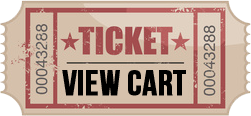In February, 1945, one of the fiercest battles of the Pacific theater of World War II occurs on the tiny island of Iwo Jima. Thousands of Marines attack the stronghold maintained by thousands of Japanese, and the slaughter on both sides is horrific. Early in the battle, an American flag is raised atop the high point, Mount Suribachi, and a photograph of the raising becomes an American propaganda piece to the war-sick Americans. Three surviving flag raisers, Rene Gagnon, John Bradley, and Ira Hayes, are whisked back to civilization to help raise funds for the war effort. But the accolades for heroism heaped upon the three men are at odds with their own personal realizations that thousands of real heroes lie dead on Iwo Jima, and that their own contributions to the fight are only symbolic and not deserving of the singling out they are experiencing. Each of the three must come to terms with the honors, exploitation, and grief that they face simply for being in a photograph.
To do a film review of this film you must first explain the backstory on how the film came into being or nearly didn't. The basis for the film is one of anti war and truthfulness. Spielberg (Saving Private Ryan) originally was to be the director but descided he would be better off as producer and consequently enlisted the aid of Eastwood ("letters from Iowa Jima" soon to be released) to direct. Essentially this is where the problem with the film lies. Two visions of 2 directors are moulded into one. Not unlike A.I. (Artifical Intelligence) where Kubrick started to direct the film and Spielberg finished it leaving the audience with a confused mis-mash storyline. Whils't the acting in the film is well done by its lead stars , it is the character development that suffers due to an uneven script and perhaps two differing visions of what it should be by the producer and director. The film begins in present day and then is told in a series of flashbacks largely between the actual war sequences at Iowa Jima and then on US soil where the propaganda machine is kicking into overdrive. Key character names are mentioned throughout the film (who perished at the battle) but this reviewer had difficulty in identifying who they were due to the little time spent on character development at the begining of the film. The flashback concept can succeed but in this instance it only enhanced this major flaw. This character development process was also hindered by the fact that like in any war film, soldiers have the same uniform and often are seen in the thick of battle wearing helments.
Flags Of Our Fathers production value is to be admired. It has all the elements that made the opening landing sequences in Saving Private Ryan so beliveable.With the advent of CGI (computer genearted images), more and more epics are being made which are definitely enhancing production standards. At times the battle scenes do come across as extremly graphic but not out of context of the period it was set in.On the big screen, the special effects look great, but unfortunately the above mentioned script flaws do make the viewer want to have a nap during these scenes. If you have a big screen TV at home , you may want to wait till it comes out on DVD to try this one out.
The Japanese government would not permit filming of combat scenes on Iwo Jima, so scenes were filmed in Iceland which also has black sand beaches due to volcanic activity. Flags was shot back-to-back with "Letters from Iwo Jima (2007)" soon to be released and directed by Eastwood largely to save on productions costs and time availablity. The film was shipped to theaters under the code-name "Montana" and the first reel was shipped separately from the other seven to further prevent piracy.






